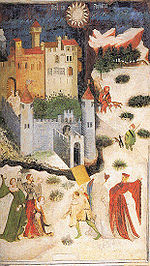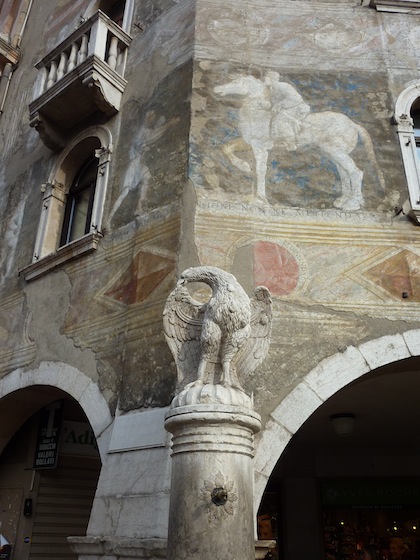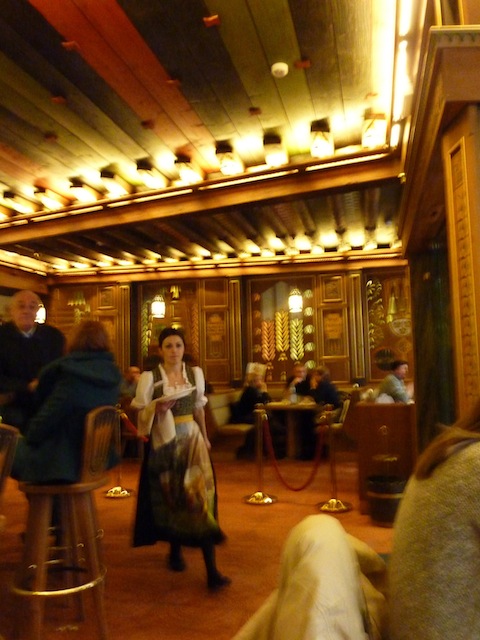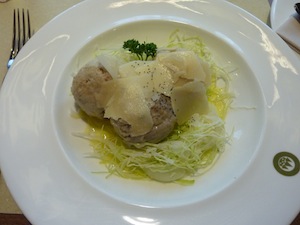To those of you who are kind and generous enough to follow my blog, to encourage me by leaving a comment from time to time, please accept my apologies: I left you dangling after “A Winter Vacation – Part 1” without continuing to Part 2 and Part 3, etc. Hoping that late is better than never…please let me continue, hoping you may still be interested.
ELEGANT TRENT
The Castello del Buonconsiglio (above) is a museum as well as the largest monumental complex in Trentino-Alto Adige. One of its most exceptional collections is of 13th and 14th century wood scultpures: two entire rooms dedicated to the amazing works which always fascinate me. It is hard for me to explain my passion and fascination for pre-Renaissance wood sculptures: could part of the reason be the exquisite porcelain-like enamel with which they were painted? Art of that period, in general, intrigues, beckons and beguiles me….
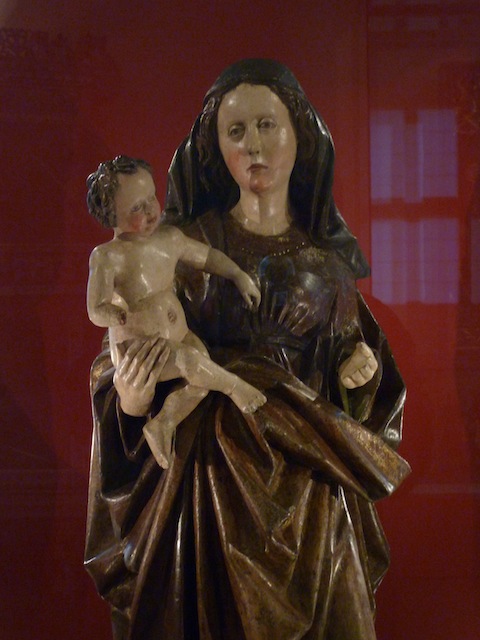 just one of the numerous medieval wood sculptures
just one of the numerous medieval wood sculptures
The Castle (Castello del Buonconsiglio), built up against the 13th city walls, served as the residence of the Bishops of Trento from the second half of the 13th century until the secularization of the principality in 1803. It was originally called Malconsey, after the small hill it is situated on, and later took the name of “Buonconsiglio”, i.e. the community meeting place. Built for defence purposes on a rocky relief as a Roman “castrum”, it became a real fortress in the 13th century. During the invasion of Napoleon, Pietro Vigilio Thun abandoned the castle which then became an Austrian military barracks. During the First World War the trial against the irredentists Cesare Battisti, Fabio Filzi and Damiano Chiesa took place there. The Italian State, which became the owner of the castle in 1918, gave it to the Autonomous Province of Trento in 1974. Today it is the seat of the Provincial Art Museum, monuments and provincial art collections. It holds numerous collections of art, paintings, sculptures, graphic works, miniate codes, majolica ovens, as well as archaeological and numismatic collections. Among its many Baroque and Gothic frescoes, an outstanding work is the Ciclo dei Mesi (Cycle of the Months) considered one of the most significant examples of international Gothic style in the world.
the month of January- from the Cycle of the Months – curiously…the only example in the world of the playful throwing of snowballs by nobility in 13th century frescoes
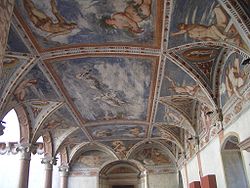 two of the many vaulted and frescoed passageways in the Castello
two of the many vaulted and frescoed passageways in the Castello
Trent Cathedral
Cattedrale di San Vigilio, Duomo di Trento) is a Roman Catholic cathedral in Trento, northern Italy. It is the mother church of the Roman Catholic Archdiocese of Trento, and, until 1802, was the seat of the Bishopric of Trent. It was built over a pre-existing 6th-century church devoted to Saint Vigilius (Italian: San Vigilio), patron saint of the city.
 extra beautiful during our visit at Christmas time
extra beautiful during our visit at Christmas time
Bishop Federico Wanga commissioned the architect Adamo d’Arogno to construct the new Lombard-Romanesque church. Works continued for more than a hundred years, with the Gothic style becoming increasingly evident.
The façade has a large rose window (please see above) including The Wheel of Fortune. Notable also are the lions supporting the columns of the narthex on the northern side and the twisting columns in the apsidal area.
The interior has a nave and two aisles with a transept. The latter has 14th-century frescoes depicting the legend of Saint Julian and the stone statue of the Madonna degli Annegati (here below).
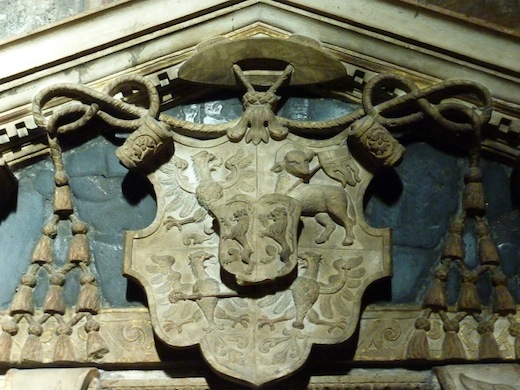 (above) an interesting Mannerist painting – (here and below) fascinating and complex iconography beautifully depicted in intricate stone work
(above) an interesting Mannerist painting – (here and below) fascinating and complex iconography beautifully depicted in intricate stone work
The apse of the right transept houses the relics of the local martyrs Sisinius, Marturius and Alexander who died around 397 AD. In the right aisle is the Crucifix Chapel (1682), with a wooden crucifix at the feet (see above) of which were promulgated the issues of the famous Council of Trent, whose sessions were held in the church’s presbytery. Painter Ludovico Dorigny also contributed works to the cathedral.
The entire historic center of Trent is elegant with marble sidewalks, medieval monuments, elegant architecture, frescoed façades, exquisite stone work….
and myriad excellent restaurants serving the typical and delicious regional specialties.
Trent has a noteworthy and very festive Christmas Market as well: it was great fun to sample local specialties at stand after stand, especially the remarkable cheeses from Alpine “hutte”.
The typical Trento Christmas specialty, the Zelten (below center) is presented in this beautiful box with a reproduction of an 18th century lithograph of the main square and Cathedral of Trent.


